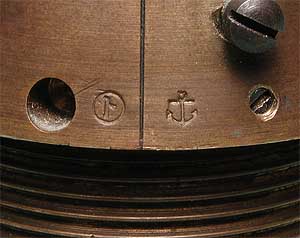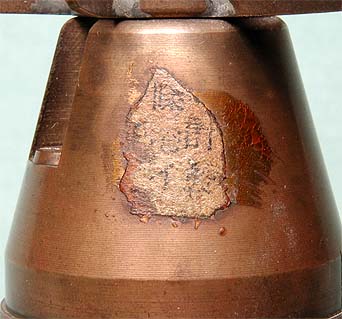

The Type D-2(a) bomb tail fuze is one of three variations (A, B & C), similar in style and function. It is a clockwork time-delay mechanism designed for aerial burst incendiary bombs.
The graduated timing ring turns to select the time delay (seconds) and is adjusted before the bomb is mounted to the plane. A set screw locks the ring in place.
Since the time delay is not adjustable after take-off, a pre-determined bomb run altitude is required so the bomb detonates at the correct elevation, usually about 100 to 175 feet above the target.
After the bomb is dropped, the wind vane is free to turn and spins up to a stop on a spring-loaded shaft which unlocks the timing mechanism. (Unlike the B-3 Series tail fuze, this wind vane remains attached.)
A spring-driven clock then runs and turns a timing rotor at a predetermined rate. When the timer completes its travel, mechanisms automatically actuate the firing pin.
There is a centrifugal safety which arms only after the bomb is spinning at 1000rpm, (similar to anti-aricraft artillery fuzes). Angled fins on the bomb cause this rotation.
This type fuze was introduced prior to 1940.
 D-2 Cutaway Diagram
D-2 Cutaway Diagram D-2 Components
D-2 Components


